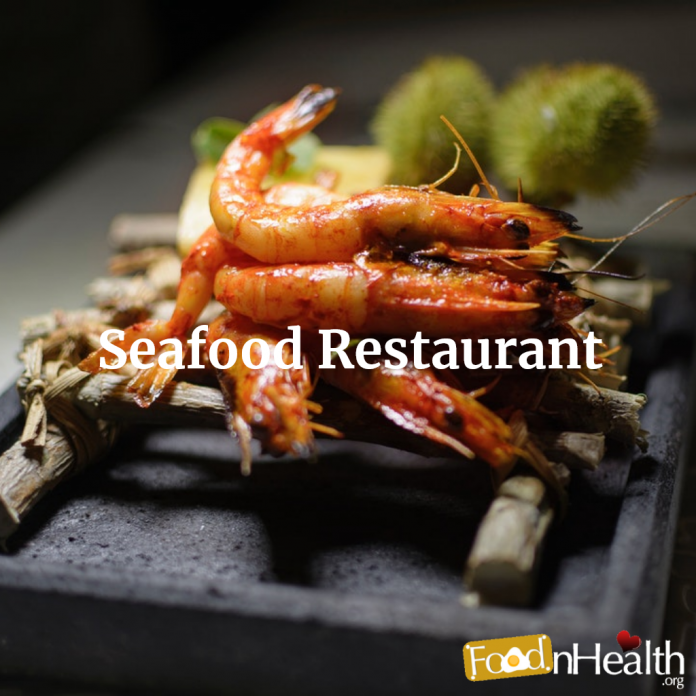A seafood restaurant is most popularly regarded as a restaurant specializing in its preparation of seafood cuisine and dishes of seafood too. Such dishes may abide to the inclusion of freshwater fish. Seafood restaurants are mainly concerned with the preparation of fresh seafood. These restaurants don’t find frozen products suitable to get a part in their service. Bringing way for the retail sale of seafood consumers can also get arranged with seafood to take home. The decoration in such restaurants may count for the use of fish nets, buoys and nautical images. However, non-seafood items, such as certain dishes of beef and chicken may also be available here.
Types of seafood restaurants:
- Upscale seafood restaurants
- Midscale seafood restaurants
These restaurants hold the capacity to offer more number of selections in comparison to the quick-service restaurants. Moreover, such restaurants are mainly located nearby to or on a waterfront.
Fare in seafood restaurants:
The seafood restaurants have got their fare in the category of frozen and fresh fish, lobster, shrimp, oysters and shellfish. Some of these restaurants also comprise of a raw bar area. This area looks upon the process of preparation of raw shellfish products, such as raw oysters.
List of notable seafood restaurants around the world:
- seafood restaurant Downtown Atlanta
- Anstruther Fish Bar
- The Ashvale
- Flying Fish
- Mul Yam
- Nordsee
- Riverside Restaurant
A brief description of seafood:
Seafood refers to any life found in the sea and can be termed as a source of food by humans. The general inclusions in seafood are for fish and shellfish. Shellfish, furthermore include several species of crustaceans, molluscs and echinoderms too. Historically, whales and dolphins, which fall under the category of sea mammals were consumed. However, the modern era allows such consumption to a lesser extent only. The Asian continent has been a viewer among the majority for the consumption of seaweed and microalgae.
Fishing and aquaculture hold a great difference between each other. The former one refers to the harvesting of wild seafood. However, the latter refers to the process of cultivation of seafood and is popularly called fish farming in case of fish.
Seafood is a constant source of protein and is mainly consumed in the coastal areas. This term doesn’t go in its real form in a strict vegetarian diet and is distinguished from meat, inspite of being an animal.
Types of seafood:
Seafood has broadly been categorised into five categories. These include,
-
Fish:
The term ‘fish’ refers to the vertebrates living in the aquatic environment and lacking limbs with digits. These vertebrates make use of their gills to breathe. Moreover, they make use of hard bone or cartilage skulls to protect their heads.
Fish have been further sub-grouped into,
- marine pelagic
- marine demersal
- diadromous
- freshwater
-
Mollusc:
This term refers to the invertebrates comprising of a soft body. However, their body is not segmented like crustaceans. A calcareous shell is used for the protection of bivalves and gastropods. This shell grows with the growth of mollusc. Shell is not used for the protection of cephalopods.
Molluscs have further categorised into,
- Bivalves
- Gastropods
- Cephalopods
- Other
-
Crustaceans:
Crustaceans are the invertebrates. They have a segmented body. Hard crusts, usually made up of chitin are used for the protection of their segmented bodies. These crusts are no less than a knight’s armour in their structure. A popular crustacean in the commercial world is decapods. They have ten legs and are blessed with compound eyes. When cooked, the shell of this popular one turns to the colour of pink or red.
Crustaceans are sub-grouped into,
- Shrimps
- Crabs
- Lobsters
- Krill
- Other
-
Other aquatic animals:
These include,
- Aquatic mammals
- Aquatic reptiles
- Echinoderms
- Jellyfish
- Other
-
Aquatic plants and microphytes:
These include,
- Seaweed
- Microphytes
Seafood is a prime source of protein for a lot of people around the world. The greatest number of consumers of seafood per capita come from Iceland, Japan and Portugal. A combination of whitefish and oily fish rich in Omega-3 has been found to be much helpful to treat Coronary Heart disease and to strengthen bones and teeth too.


























